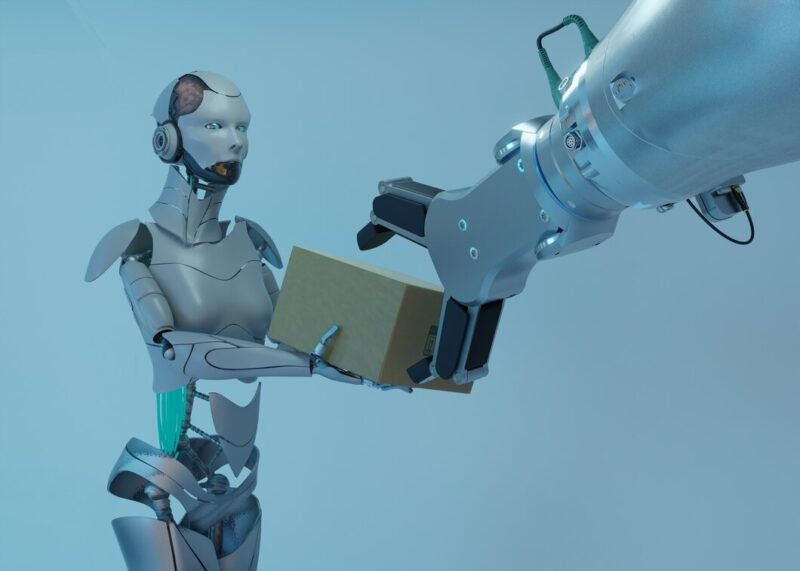In today’s rapidly evolving industrial landscape, the integration of advanced technologies is paramount for driving economic growth, enhancing efficiency, and maintaining competitiveness. Among these technologies, collaborative robot arms, or cobot arms, have emerged as transformative tools with the potential to revolutionize various industries. This article explores the pivotal role of cobot arms in fostering economic growth by driving efficiency and competitiveness.
Understanding Cobot Arms
Cobot arms are robotic devices designed to collaborate and work alongside human operators in a shared workspace. Unlike traditional industrial robots, which often require dedicated safety cages and are programmed for specific tasks, cobot arms are equipped with advanced sensors and software that enable safe interaction with humans. These robots come in various configurations, including articulated arms, cartesian robots, and SCARA (Selective Compliance Articulated Robot Arm) robots, each suited to different applications and industries.
The evolution of cobot arms can be traced back to the early 2000s when researchers began exploring ways to create robots capable of human-robot collaboration. Since then, significant advancements in sensors, artificial intelligence, and machine learning have propelled the development and adoption of cobot arms across diverse sectors, including manufacturing, logistics, healthcare, and agriculture. Today, cobot arms are increasingly being integrated into production lines and workflows to augment human capabilities and improve operational efficiency.
To learn more about robotic arms and their uses, you can view the article: Why do we have robots?
Economic Growth and Its Drivers

Economic growth refers to the increase in a country’s production of goods and services over time, usually measured by gross domestic product (GDP) or gross national product (GNP). It is a crucial indicator of a nation’s prosperity and development, reflecting improvements in living standards, employment opportunities, and technological advancement.
Several factors influence economic growth, including investment in physical and human capital, technological innovation, government policies, and international trade. Technological innovation plays a particularly crucial role in driving economic growth by increasing productivity, reducing costs, and stimulating new economic activities.
Technological innovation, including the adoption of advanced robotics and automation technologies like cobot arms, is a significant driver of economic growth. By automating repetitive and labor-intensive tasks, cobot arms can significantly enhance productivity and efficiency, freeing up human workers to focus on higher-value activities such as innovation, problem-solving, and creativity.
Driving Efficiency through Cobot Arms
One of the primary benefits of cobot arms is their ability to enhance productivity and output. By automating repetitive and time-consuming tasks, cobot arms can operate continuously without fatigue or error, leading to higher production rates and increased output.
Cobot arms play a crucial role in streamlining production processes by optimizing workflow efficiency and reducing cycle times. These robots can perform a wide range of tasks, from material handling and assembly to quality inspection and packaging, with speed and precision, resulting in smoother and more streamlined operations.
The advanced sensing and control capabilities of cobot arms enable them to minimize errors and downtime in manufacturing processes. Through real-time monitoring and adaptive control, cobot arms can detect and rectify deviations from optimal performance, ensuring consistent product quality and reducing costly production interruptions.
Fostering Competitiveness with Cobot Arms

One of the key advantages of cobot arms is their ability to reduce production costs and improve profitability. By automating labor-intensive tasks, cobot arms lower labor costs, minimize scrap and rework and optimize resource utilization, leading to overall cost savings and increased competitiveness in the marketplace.
Cobot arms contribute to improved product quality and consistency by executing tasks with precision and repeatability. Unlike human workers, cobot arms do not suffer from fatigue or variability, ensuring uniformity in product specifications and reducing the likelihood of defects or errors.
The flexibility and adaptability of cobot arms enable businesses to respond quickly to changing market demands and production requirements. These robots can be easily reprogrammed and reconfigured to perform different tasks or accommodate variations in product design, allowing companies to maintain agility and competitiveness in dynamic market environments.
Challenges and Considerations
The widespread adoption of cobot arms and other automation technologies raises concerns about potential job displacement and labor market disruptions. While automation may eliminate some traditional jobs, it also creates new opportunities for employment in areas such as robotics programming, maintenance, and supervision.
Addressing the skills gap and providing adequate training for the workforce are essential for maximizing the benefits of cobot arms and ensuring smooth integration into existing production systems. Companies must invest in training programs to equip employees with the skills and knowledge needed to work alongside cobot arms effectively.
The deployment of cobot arms raises ethical and societal implications related to job displacement, workplace safety, and the equitable distribution of wealth. Companies must consider the broader social consequences of automation and implement policies to mitigate potential negative impacts on workers and communities.
Conclusion
Cobot arms are poised to play a transformative role in driving economic growth, enhancing efficiency, and maintaining competitiveness across various industries. By automating repetitive tasks, improving productivity, and fostering collaboration between humans and robots, cobot arms hold the potential to revolutionize the future of work and create new opportunities for innovation and prosperity.
To realize this potential, stakeholders must work together to address challenges, harness opportunities, and ensure that the benefits of cobot arms are shared equitably across society.









